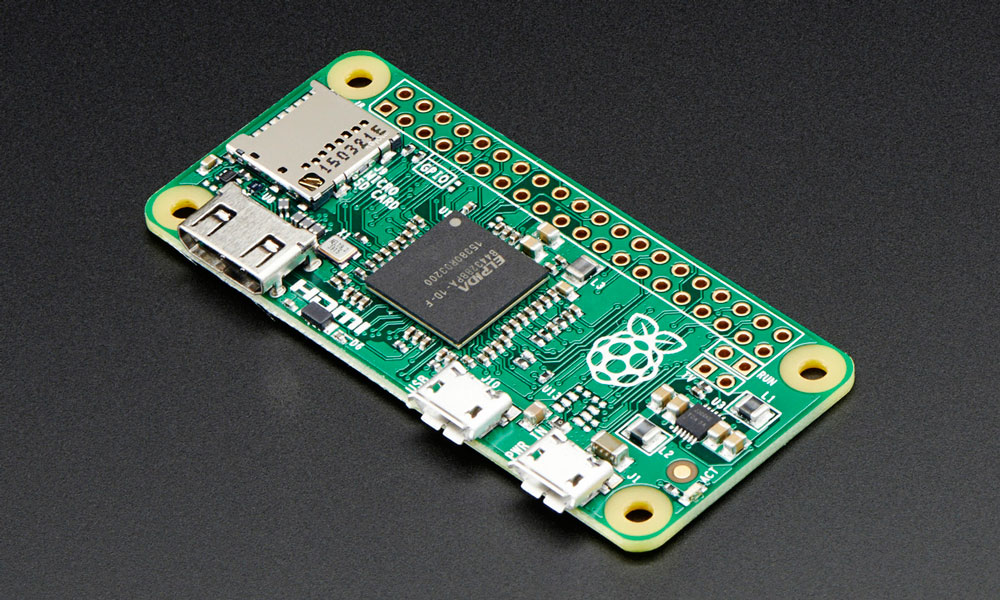
What You Can Learn From the Raspberry Pi’s Success
The Raspberry Pi Foundation—which recently launched a $5 computer (!)—has come a long way in just a few short years. The organization's fast growth is a lesson in looking past organizational limitations to build broad interest toward a key goal.
As a lot of Americans had pumpkin pie on their minds, a British nonprofit was offering up a different kind of “pi” entirely—and techies were quick to grab a byte or two.
https://vimeo.com/146893658
On Thursday, the Raspberry Pi Foundation announced the release of the latest variation of its hackable computing devices, the Raspberry Pi Zero. The device, the third major variation of the barebones circuit board, sold out almost immediately, creating a stocking stuffer that’ll offer ideas for miles. And at $5 the computer is an absolute steal, especially in the right hands.
Among the ideas earlier versions of the Raspberry Pi have inspired:

A wall-mounted Google Calendar display that automatically updates on the fly.
A homemade Google Glass-style device that its maker put together for roughly $100.

A pair of night-vision goggles.
A handmade smartphone, for which the maker built a custom operating system.
A server-rack supercomputer, built by a father-son team. (The father is an engineering professor; the son helped out, in part, by building the server rack out of Legos.)
All this stuff was designed using variations of a device that costs between $20 and $35. Just imagine what could be done with a device that costs even less. For the “Maker Movement,” the value proposition speaks for itself.
During a week when people were going wild trying to score deals big and small, the best deal perhaps was to be found on the handful of online stores that were selling the Raspberry Pi Zero. And they were gone—fast. Within 24 hours, in fact.
That’s what happens when you’ve built a lot of buzz around your organization.
An Eye Toward Education
There’s a lot to love about the Raspberry Pi concept and, from the perspective of nonprofit organizations, a lot to study.
The success of the Raspberry Pi Foundation, which launched in 2009 as a charitable organization, arose while the nonprofit was trying to attract one audience but found a second in the process.
That first audience—children and young students who have little access to computer-science instruction—has remained front of mind for the group ever since its launch. The foundation believed it might find a few thousand homes for its miniature computers. Instead, they found millions, thanks to the success of the devices among home tinkerers, who have managed to do tons of little things with these devices. It’s now the fastest-selling British-made computer of all time, with more than 5 million sold and counting.
Rather than lose sight of this goal in the face of broader success, the foundation has used public recognition to reinforce the overall mission. The organization frequently highlights the ways in which kids are learning about computing through Raspberry Pi devices, such as this young girl who “hacked” her dad’s computer using a few commands in the shell:
But, more productively, the organization highlights an array of resources for those looking to get into computing, with an eye on younger audiences. The foundation has also teamed with Code Club, another foundation with an eye on improving technology education in schools, with the goal of getting the computing devices in reach of thousands of kids.
And the foundation itself has launched programs such as an education fund, a creative technologist program, and a variety of education events.
In a lot of ways, the foundation’s work in education is amplified by the attention it gets elsewhere.
Seeing Past Limitations
Now, the Raspberry Pi Zero is not a perfect device.
For one thing, hackers will have to provide their own cables, monitors, input devices, storage mechanisms, cases, and methods for installing wireless access—and adding all those things can boost the overall cost of the device.
And what you gain from the device’s sheer scale comes with some extra costs of its own in terms of necessary converters: Rather than getting full-size HDMI and USB adapters, you instead deal with miniaturized ports, meaning you’ll have to buy adapters so your normal-sized cables can hook up to the tiny devices.
But, like the foundation itself, just because there seem to be limitations doesn’t necessarily mean that the overall potential is limited.
So much of what associations and nonprofits do seems to be organized through parameters. Leaders see things through a certain scope of mission, who they’re trying to help, and what their goals are in assisting that audience. But what if, by simply looking through that scope, they’re missing out on a broader audience who might be interested in what their organization represents?
The Raspberry Pi Foundation could have reacted to its initial buzz a lot differently way back in 2011 and 2012; it could have seen it as a distraction from its main goal and pushed away from its decision to mass-manufacture the devices. It’s a good thing they didn’t, though.
If the Foundation looked at its device’s popular success as a disruption to its primary goal of reaching younger audiences, there’s a good chance it wouldn’t be having the success it has now in reaching that younger audience. By finding a way to make hacker interest compatible with the foundation’s more specific interests, it has probably set itself up for an ongoing track record of success. Those hackers know that if they buy a Raspberry Pi, at least some of that money goes to fund those educational efforts.
Those people who invent their own night goggles and smartphones? They were once kids, too. They remember what it was like, not having anyone around to support their curiosity.






Comments